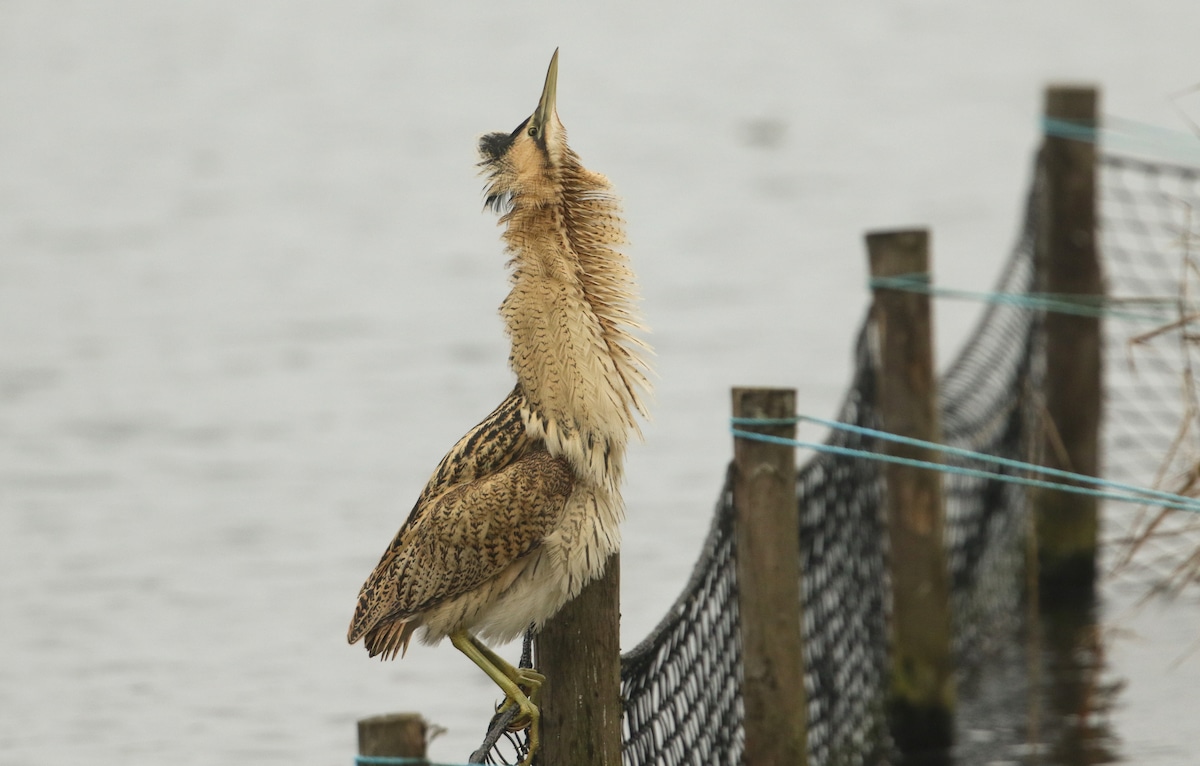

The UK’s loudest bird is making a vocal comeback.
Bitterns are a type of marsh bird in the same family as herons and egrets, according to the Natural History Museum. They were driven to extinction in the UK in the 1870s when their habitat was drained for agriculture, according to BBC News. Hunting put additional pressure on the birds. However, the species was reintroduced, and the Royal Society for the Protection of Birds (RSPB) announced they had a record-breaking year in 2021, with 228 males counted.
“Bitterns are one of [the UK’s] most charismatic birds,” RSPB senior conservation scientist Simon Wotton told the Natural History Museum. “Their astonishing recovery from the brink of extinction is a real conservation success story and example of what is possible through targeted efforts to restore wildlife habitat.”
Bitterns are famous for being hard to see but easy to hear. Their speckled brown coloring camouflages them easily in the reeds where they live, according to The Guardian. However, the males make a booming call that can be heard from three miles away. In fact, the noise is as loud as a jet taking off, the Natural History Museum said.
The males make the foghorn-sounding noise during their breeding season, which is how scientists are able to count them, according to BBC News. The birds make this noise by using the muscles around their windpipe to puff up their gullets into an echo chamber.
“It’s a delight to hear their distinctive booming call echoing across the reedbeds every year as more and more bitterns are making new or restored wetlands their home,” Wotton told the Natural History Museum.
The species’ current success is hard won. After going extinct in the late 19th century, the birds returned to Norfolk in the early 1900s and there were around 80 males by the 1950s, according to the Natural History Museum. However, when annual surveys started in 1990, the number of the birds was once again low, BBC News reported. In 1997, their numbers dipped to 11. However, wetland restoration enabled them to recover in the decades since, and their population has more than doubled in the last 10 years. The restoration of wetlands has been a boon to other species as well.
“We’ve invested millions in restoring and creating wetlands and that’s meant species like cranes, spoonbills, little egrets and great egrets have returned too,” ornithologist Dr. Alex Lees told BBC News. “Wetland birds are probably the biggest conservation success story of the last 40 years – it’s the group of species that’s really bucking the trend of nature loss.”
Today, there are bitterns all over England in Lancashire, Lincolnshire, Yorkshire, East Anglia, Kent, the West Country and London, according to The Guardian. In 2020, the first breeding pairs in at least 200 years were sited in Wales. They now visit Scotland and Ireland in the winter on an occasional basis and may settle there permanently as their recovery continues, the Natural History Museum said.

 233k
233k  41k
41k  Subscribe
Subscribe 